Visit the Museo del Novecento in Milan for top Italian 20th-century art in a modern museum with cheap and easy tickets, centrally located right next to the magnificent Duomo.
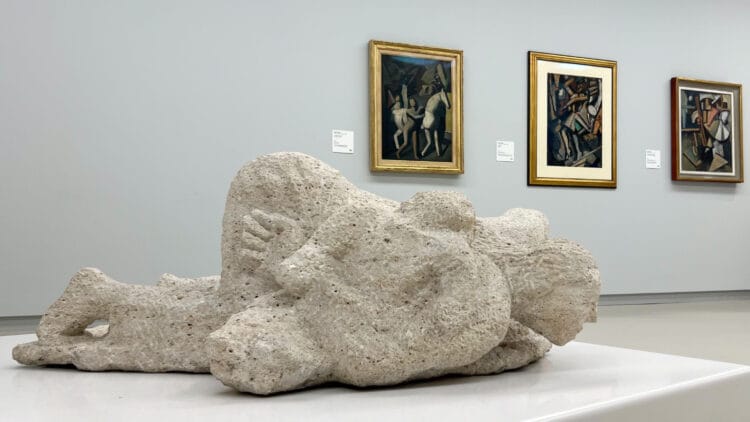
The Museo del Novecento in Milan is the city’s showcase for modern art, guiding visitors through the entire 20th century. Located right beside the Duomo, it highlights Futurism, metaphysical painting, postwar abstraction, and the radical ideas of Arte Povera. With masterpieces by Boccioni, Balla, Fontana, and Martini, the museum is both compact and inspiring. Surprisingly cheap tickets are easy to get online or at the door, or as part of art tours, making it one of Milan’s most accessible cultural stops.
Museo del Novecento: Why Go
The Museo del Novecento sits on Piazza del Duomo, near the Duomo Museum, and delivers a tight, vivid tour of Italy’s 20th-century art. With only around 300 artworks on display, it’s compact, easy to digest, and a great modern counterpoint to Milan’s Old Master stars at the Brera and the Ambrosiana.
“Novecento” is Italian shorthand for the 1900s—this museum tells that century’s Italian art story in a few focused chapters.
What You’ll See (At a Glance)
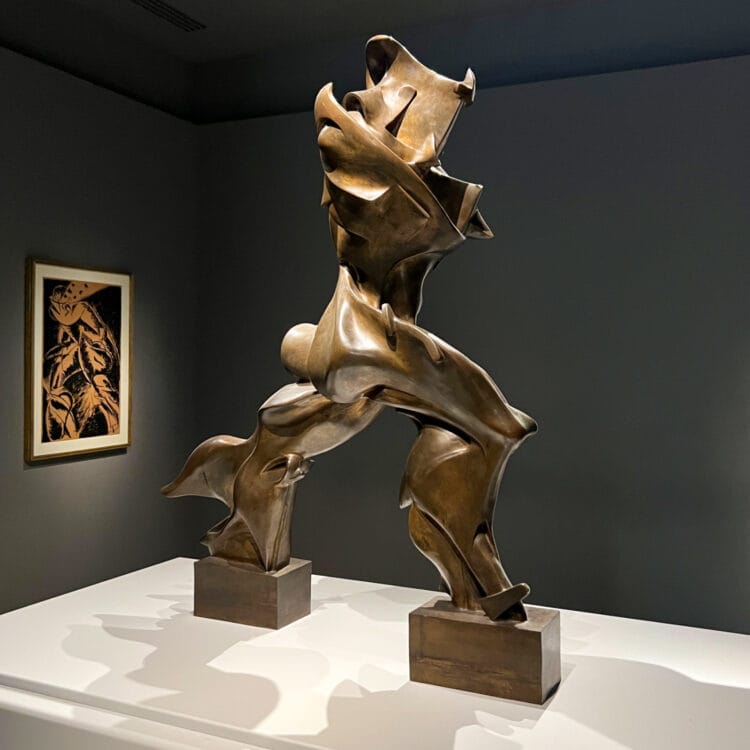
- Futurism (1910s): motion, machines, electricity.
- Controversial Modernities (20s-40s): metaphysical paintings with stillness, long shadows, enigmatic plazas, and a return to previous realistic works.
- Postwar abstraction (40s-60s): cuts, space, delicate metal “drawings.”
- Gestures & processes (1960s–1990s): Arte Povera, installation, conceptual wit.
FUTURISM: The Spark
Futurism is the museum’s engine. Umberto Boccioni’s Unique Forms of Continuity in Space turns a striding figure into aerodynamic flow—modern life cast in bronze. Giacomo Balla chases light and motion; Carlo Carrà and Luigi Russolo fracture forms to mimic the shock of the new city. Seeing this in Milan matters: it’s the movement’s home turf.
Controversial Modernities

During the fascist era, 1920s to mid-1940s, some artists tried to return to the figurative art of the great masters, while others pursued the more international avant-garde ideas.
Futurism accelerates; the metaphysical suspends. That tension—speed versus stillness—runs through the museum.
The tempo drops with Giorgio de Chirico—his paintings feel like a stage set awaiting a mystery. Arturo Martini, the leading public works sculptor of the era, returned to a more classic style in his sculptures.
Abstraction, Space, and Material
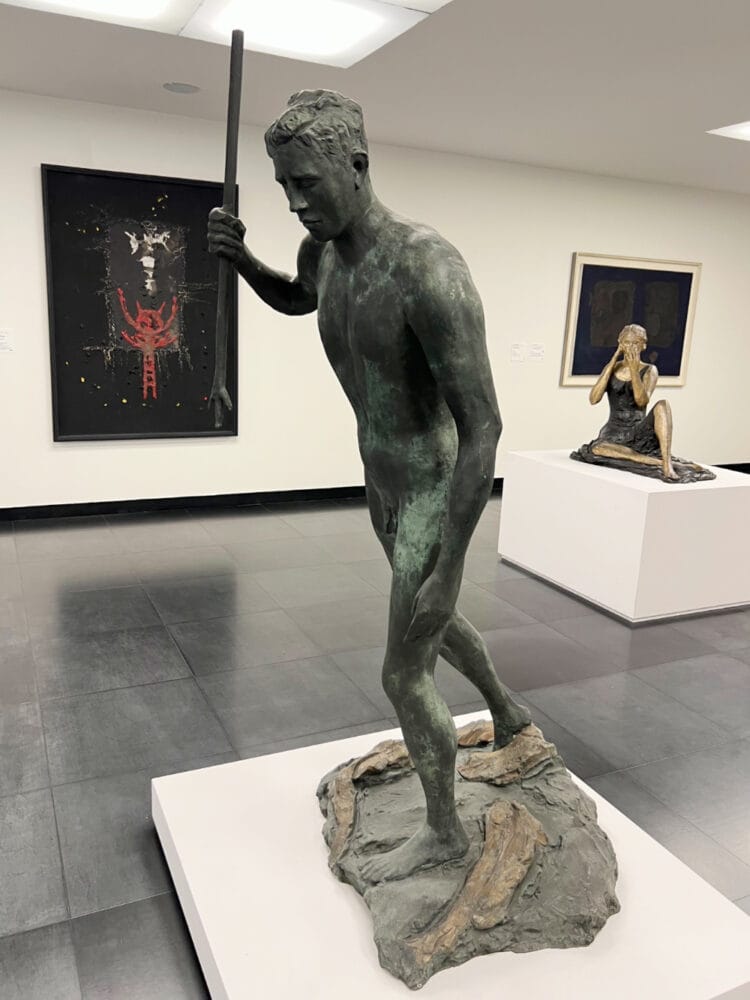
After the war, Milan becomes a lab for ideas.
- Lucio Fontana pierces the canvas (Concetti spaziali) to make literal space for the subject.
- Fausto Melotti bends thin metal into lyrical, airy structures—music made sculptural.
- Osvaldo Licini plays with biomorphic signs and poetic symbols.
- Arnaldo Pomodoro crafts spheres where geometry meets grit.
Gestures & Processes (1960s–1990s)

Artists push past traditional mediums and ask what “art” is for.
- Arte Povera swaps precious materials for the everyday: stone, cloth, glass, mirrors, and neon.
- Piero Manzoni pared painting back to near-zero with his Achromes—and tweaks the market with provocative works that still spark debate.
- Michelangelo Pistoletto uses mirrors to fold viewers and the room into the artwork.
- Enrico Baj satirizes power and violence; The Funeral of the Anarchist Pinelli mixes politics, collage, and bite.
- Mario Merz strings the Fibonacci sequence in neon, treating numbers like poetry.
How the Museum Flows
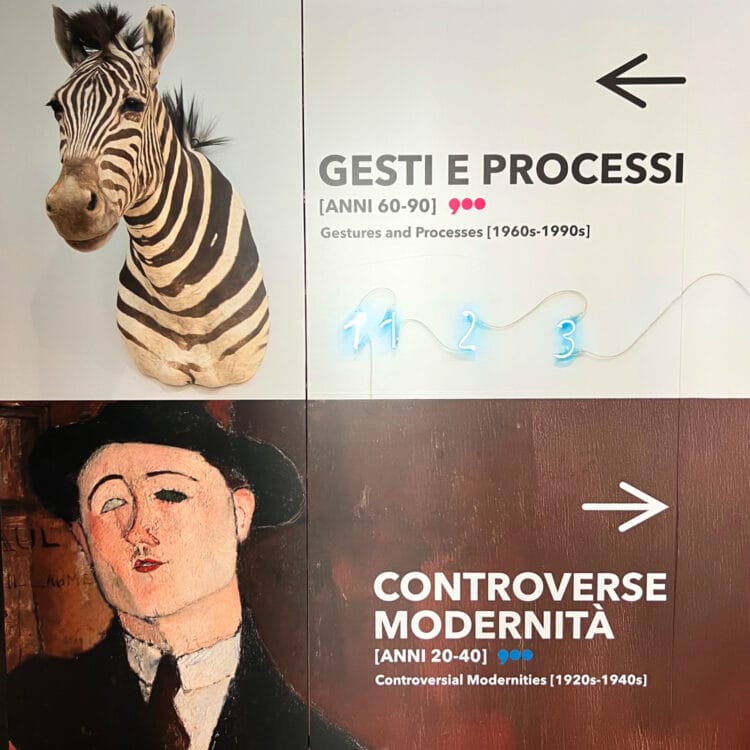
Galleries are arranged chronologically with thematic pivots, and the building’s spiral guides you gently upward. Windows frame the Duomo at well-timed moments—use them as breathers between movements. The pacing feels like chapters rather than a march of dates.
International Dialogues

A handful of works by Pablo Picasso, Wassily Kandinsky, Paul Klee, or Henri Matisse appear not as headliners but as context. They show how Italian artists absorbed and reshaped ideas circulating across Europe.
Quick Highlights (Good for a First Visit)
- Boccioni, Unique Forms of Continuity in Space — the modern body as speed.
- Balla — light studies that feel like sound.
- De Chirico — plazas where time stalls.
- Fontana, Concetti spaziali — slits that turn surface into space.
- Manzoni, Achromes — almost-nothing as a radical statement.
- Baj, The Funeral of the Anarchist Pinelli — satire with teeth.
- A rotating slice of Arte Povera — ordinary matter, extraordinary ideas.
Opening Hours & Tickets
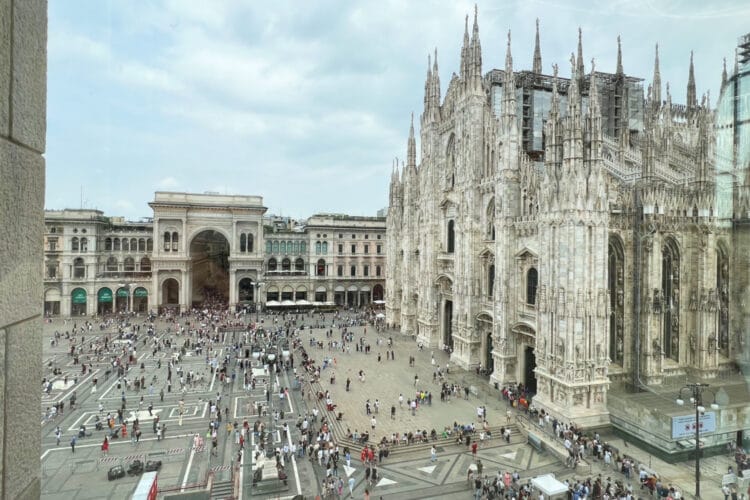
The Museo del Novecento modern art museum in Milan is open Tuesday to Sunday from 10:00 to 19:30, but closing at 22:30 on Thursday.
Admission tickets are €5, €3 for youths 18 to 25 and seniors over 65, and free for children under 18.
Admission is free on the first Sunday of the month (time-slot reservation essential) but also on the first and third Tuesday after 14:00 every month.
→ For a more detailed description, see also Visit the Museo del Novecento (20th-Century Art Museum) in Milan.